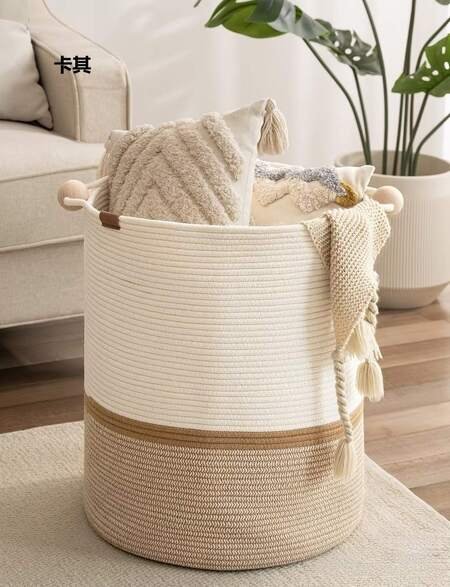
Introduction
In 2024, the demand for cotton baskets continues to grow steadily across various industries, from home decor and retail to the food and hospitality sectors. These versatile and eco-friendly products are not only popular for their functionality but also for their aesthetic appeal, which aligns with the current consumer preference for sustainable and natural-looking items. Sourcing high-quality cotton baskets requires a comprehensive understanding of the market, suppliers, and the production process. This guide will walk you through everything you need to know to make informed decisions when sourcing cotton baskets in 2024.
Market Trends in 2024
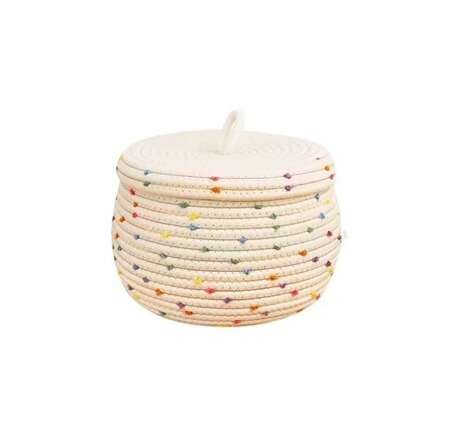
Design Preferences
Consumers are increasingly drawn to cotton baskets with simple, minimalist designs that can blend seamlessly with different interior styles. Natural, undyed cotton is highly sought-after, as it gives a rustic and organic feel. However, there is also a growing demand for baskets with subtle patterns or accents, such as hand-embroidered details or colored cotton weaves. These can add a touch of uniqueness to the product. Additionally, multi-functional designs, like baskets with lids for storage or those that can be folded for easy storage, are gaining popularity.
Sustainability as a Key Driver
The push for sustainable products has had a significant impact on the cotton basket market. Consumers are more aware of the environmental and social implications of their purchases. They are looking for cotton baskets made from organic cotton, which is grown without the use of synthetic pesticides and fertilizers. Fair-trade practices are also crucial, ensuring that the workers involved in the production process are paid fair wages and work in safe conditions. Brands that can demonstrate their commitment to sustainability through certifications such as GOTS (Global Organic Textile Standard) or Fairtrade are likely to have a competitive edge in the market.
Price Sensitivity
While quality and sustainability are important factors, price still plays a significant role in consumer decision-making. The cost of cotton baskets can vary widely depending on factors such as the quality of the cotton, the complexity of the design, and the production location. In 2024, consumers are more price-sensitive than ever, especially in the face of economic uncertainties. This means that sourcing cotton baskets at a reasonable cost without compromising on quality is essential for businesses to remain competitive.
Understanding Cotton Basket Materials
Types of Cotton Used
- Organic Cotton: Grown in an environmentally-friendly manner, reducing the negative impact on soil, water, and air. Organic cotton is also softer and more breathable, making it ideal for products that come in contact with the skin or food.
- Conventional Cotton: The most commonly used type. It is widely available and generally more affordable than organic cotton. However, its production involves the use of pesticides and fertilizers, which can have environmental and health implications.
- Recycled Cotton: Made from post-consumer or post-industrial cotton waste, such as old clothing or fabric scraps. Using recycled cotton helps to conserve resources and reduce the carbon footprint of the product.
Impact of Cotton Quality on Basket Durability
The quality of the cotton used in basket making has a direct impact on the durability of the final product. Higher-quality cotton, whether organic or conventional, is more likely to be stronger and more resistant to wear and tear. Long-staple cotton, for example, has longer fibers, which can be woven more tightly, resulting in a more durable basket. In contrast, lower-quality cotton with shorter fibers may be more prone to fraying and breaking over time. When sourcing cotton baskets, it is important to assess the quality of the cotton to ensure that the baskets will meet the needs of your customers.
Other Materials Used in Conjunction with Cotton
Cotton baskets are often combined with other materials to enhance their functionality and aesthetic. Some common materials include:
- Wood: Wooden handles or frames are frequently added to cotton baskets to make them easier to carry. The type of wood used can also add to the overall look of the basket, with options like bamboo, oak, or pine.
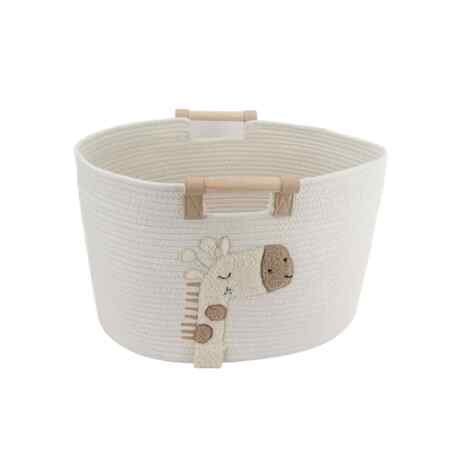
- Rattan or Wicker: These natural materials can be woven together with cotton to create unique patterns and textures. Rattan and wicker are known for their strength and flexibility, which can improve the durability of the basket.
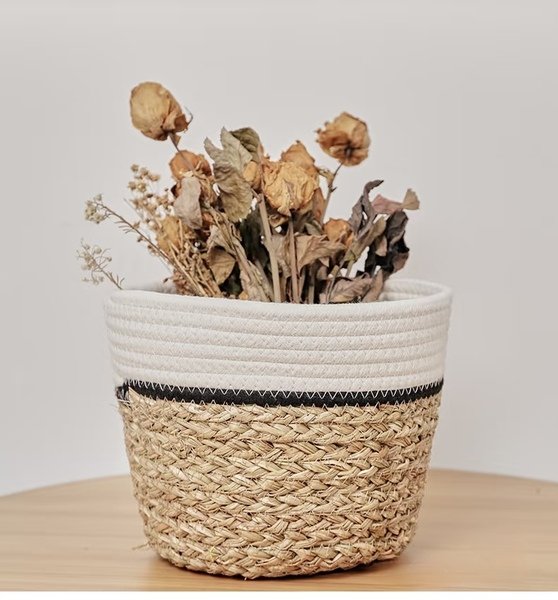
- Plastic or Metal Accents: In some cases, plastic or metal elements may be used, such as clasps for lids or decorative studs. However, when considering sustainability, it is important to ensure that these materials are used sparingly and are recyclable if possible.
Sourcing Strategies
Identifying Reliable Suppliers
- Online Platforms: There are numerous online platforms that connect buyers with cotton basket suppliers from around the world. These platforms often provide detailed information about the suppliers, including their product range, production capacity, and customer reviews. Some popular platforms include Alibaba, Etsy (for more artisanal and handmade products), and specialized textile sourcing platforms.
- Trade Shows and Exhibitions: Attending trade shows related to textiles, handicrafts, or home decor is an excellent way to meet suppliers in person. These events bring together a large number of suppliers, allowing you to view their products firsthand, discuss your requirements, and build relationships. Examples of relevant trade shows include Heimtextil in Germany, which focuses on home textiles, and the Handmade Expo in various locations, which showcases a wide range of handmade products, including cotton baskets.
- Referrals and Networking: Reach out to industry contacts, such as other business owners who have experience sourcing cotton baskets. They may be able to recommend reliable suppliers based on their own experiences. Joining industry associations or online forums related to your business can also provide opportunities to network with others in the field and get valuable referrals.
Evaluating Supplier Credibility
- Business Reputation: Research the supplier's reputation by checking online reviews, testimonials, and ratings. Look for any signs of negative feedback, such as issues with product quality, delivery times, or customer service. A supplier with a good reputation is more likely to be reliable and trustworthy.
- Certifications and Compliance: Check if the supplier has relevant certifications, such as GOTS for organic cotton products or Fairtrade for ensuring fair labor practices. These certifications are a sign that the supplier meets certain quality and ethical standards. Additionally, ensure that the supplier complies with all relevant laws and regulations, including environmental and safety regulations.
- Production Capacity and Lead Times: Assess the supplier's production capacity to ensure that they can meet your order requirements, especially if you have large-scale or ongoing orders. Inquire about their lead times, which is the time it takes from placing an order to receiving the products. A supplier with a short and reliable lead time can help you meet your own customer deadlines.
- Communication and Responsiveness: Good communication is essential when working with a supplier. Evaluate how quickly and effectively the supplier responds to your inquiries. A responsive supplier is more likely to address any issues or concerns you may have during the sourcing process.
Working with Artisanal vs. Mass-Producing Suppliers
- Artisanal Suppliers: Artisanal suppliers often produce cotton baskets by hand, using traditional techniques passed down through generations. These baskets tend to have a unique, one-of-a-kind quality, with each piece showing the craftsmanship of the maker. Working with artisanal suppliers can be a great option if you are looking for high-end, unique products that can add a special touch to your inventory. However, their production capacity may be limited, and the prices may be higher due to the labor-intensive nature of the production process.
- Mass-Producing Suppliers: Mass-producing suppliers use more automated production methods and can produce large quantities of cotton baskets in a shorter time. They are suitable for businesses with high-volume orders or those looking for more affordable products. While the products may lack the artisanal charm, they can still offer good quality and functionality. When working with mass-producing suppliers, it is important to ensure that they maintain consistent quality across all products.
Quality Control
Inspecting Cotton Basket Samples
Before placing a large order, it is crucial to request and inspect samples of the cotton baskets. Look for the following when inspecting the samples:
- Cotton Quality: Check the texture, softness, and strength of the cotton. Ensure that there are no signs of discoloration, stains, or damage.
- Weaving and Construction: Examine the weaving pattern to ensure that it is even and tight. Look for any loose threads, knots, or areas where the weaving appears to be weak. Check the construction of the basket, including the attachment of handles, lids (if applicable), and any other components.
- Design and Aesthetics: Verify that the design of the basket matches your expectations. Check for any imperfections in the pattern, embroidery, or other decorative elements.
Setting Quality Standards and Specifications
Work with your supplier to establish clear quality standards and specifications for the cotton baskets. These should include details such as:
- Cotton Type and Quality: Specify whether you require organic, conventional, or recycled cotton, and the minimum quality standards for the cotton, such as fiber length and strength.
- Dimensions and Size Tolerances: Clearly define the dimensions of the basket, including length, width, height, and any specific size tolerances that are acceptable.
- Design and Finish Requirements: Outline the design elements, such as the pattern, color, and any additional features like handles or lids. Specify the finish of the basket, whether it should be smooth, rough-textured, or have a particular sheen.
- Durability and Performance Standards: Set standards for the durability of the basket, such as how many times it can be used or how much weight it can hold without breaking.
Handling Defective Products
In the event that you receive defective products, it is important to have a clear process in place for handling them. This should include:
- Notification to the Supplier: Immediately notify the supplier of the defective products, providing detailed information about the nature of the defects and the quantity of affected items.
- Return and Replacement Policy: Agree on a return and replacement policy with the supplier before placing the order. This should specify who is responsible for the cost of returning the defective products and how quickly the replacement products will be provided.
- Quality Improvement Measures: Work with the supplier to identify the root cause of the defects and implement measures to prevent similar issues in future orders. This may involve providing additional training to the production staff or making changes to the production process.
Pricing and Cost Considerations
Factors Affecting the Cost of Cotton Baskets
- Cotton Quality: As mentioned earlier, higher-quality cotton, such as organic or long-staple cotton, will generally result in a higher-priced basket. The cost of the cotton itself is a significant factor in the overall price of the product.
- Design Complexity: Baskets with intricate designs, hand-embroidered details, or multiple components will be more expensive to produce. The more labor-intensive the design, the higher the cost.
- Production Location: The cost of labor and production can vary widely depending on the location of the supplier. Suppliers in countries with lower labor costs may be able to offer more affordable products, but it is important to also consider factors such as quality control and shipping costs.
- Order Quantity: Generally, the larger the order quantity, the lower the unit cost. Suppliers may offer volume discounts for bulk orders, so it is worth considering ordering in larger quantities if it is feasible for your business.
Negotiating Prices with Suppliers
- Do Your Research: Before entering into price negotiations, research the market to get an idea of the average prices for similar cotton baskets. This will give you a benchmark to work with and help you determine a reasonable price range.
- Highlight Your Value as a Customer: Let the supplier know about your business's potential for repeat orders, your marketing reach, and any other factors that may make you an attractive customer. This can give you more leverage in the negotiation process.
- Be Flexible: Consider other aspects of the deal that you may be able to negotiate, such as payment terms, shipping costs, or product customization. Sometimes, making concessions in these areas can lead to a better overall price.
- Build a Relationship: Developing a good relationship with the supplier over time can also be beneficial for price negotiations. A supplier who values your business may be more willing to offer competitive prices and favorable terms.
Hidden Costs to Watch Out For
- Shipping and Freight Costs: Shipping costs can be a significant hidden expense, especially if you are sourcing from overseas suppliers. Make sure to get a detailed quote for shipping costs upfront and factor them into your overall budget. Consider different shipping options, such as air freight or sea freight, and their associated costs and delivery times.
- Customs and Duties: When importing cotton baskets, you may be subject to customs duties and taxes. These can vary depending on the country of origin, the value of the goods, and the specific customs regulations of your destination country. Research and understand these costs before placing an order.
- Quality Control and Inspection Costs: If you need to conduct independent quality control inspections, there may be associated costs. This could include hiring a third-party inspection company or the cost of sending your own staff to inspect the products at the supplier's facility.
Logistics and Shipping
Choosing the Right Shipping Method
- Air Freight: Air freight is the fastest shipping method, making it suitable for urgent orders or when time is of the essence. However, it is also the most expensive option. Air freight is often used for high-value or lightweight products.
- Sea Freight: Sea freight is a more cost-effective option for large-volume orders. It is slower than air freight, with transit times that can range from a few weeks to a couple of months depending on the origin and destination. Sea freight is ideal for bulky or heavy products, such as large quantities of cotton baskets.
- Land Freight: If you are sourcing from a supplier within the same country or region, land freight may be a viable option. It can be more flexible in terms of pick-up and delivery locations and may be more cost-effective for shorter distances.
Packaging Considerations
- Protection of the Baskets: The packaging should be designed to protect the cotton baskets during transit. Use appropriate cushioning materials, such as bubble wrap or foam, to prevent damage from impacts. Ensure that the baskets are securely packed to prevent movement within the package.
- Branding and Presentation: Consider using packaging that also promotes your brand. You can include your logo, branding colors, or product information on the packaging. This can help to create a positive impression when the products are received by your customers.
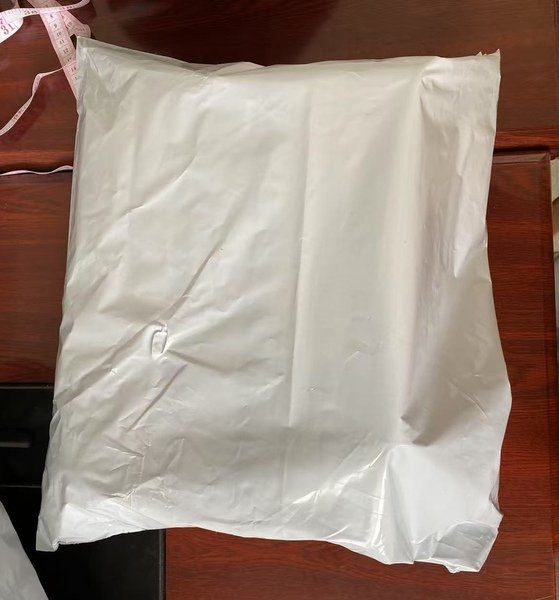
- Sustainable Packaging Options: In line with the growing focus on sustainability, look for packaging materials that are recyclable, biodegradable, or made from recycled materials. This can not only reduce your environmental impact but also appeal to environmentally-conscious customers.
Customs and Import Regulations
- Research Requirements: Before importing cotton baskets, research the customs and import regulations of your destination country. This includes understanding the documentation required, such as invoices, packing lists, and certificates of origin.
- Compliance with Regulations: Ensure that your products comply with all relevant regulations, such as safety standards and labeling requirements. Failure to comply can result in delays, fines, or the rejection of your shipment.
- Working with a Freight Forwarder: Consider working with a freight forwarder who has experience in handling international shipments. They can help you navigate the complex customs and import processes, ensuring that your products are cleared through customs smoothly.
Conclusion
Sourcing cotton baskets in 2024 requires a careful balance of considering market trends, material quality, supplier reliability, quality control, pricing, and logistics. By following the strategies and guidelines outlined in this guide, you can make informed decisions that will help you source high-quality cotton baskets at a reasonable cost. Whether you are a small-business owner looking to add unique products to your inventory or a large-scale retailer in need of bulk orders, this guide provides the essential information to ensure a successful sourcing process. Remember to stay updated on industry developments and continuously evaluate and improve your sourcing strategies to stay competitive in the market.


